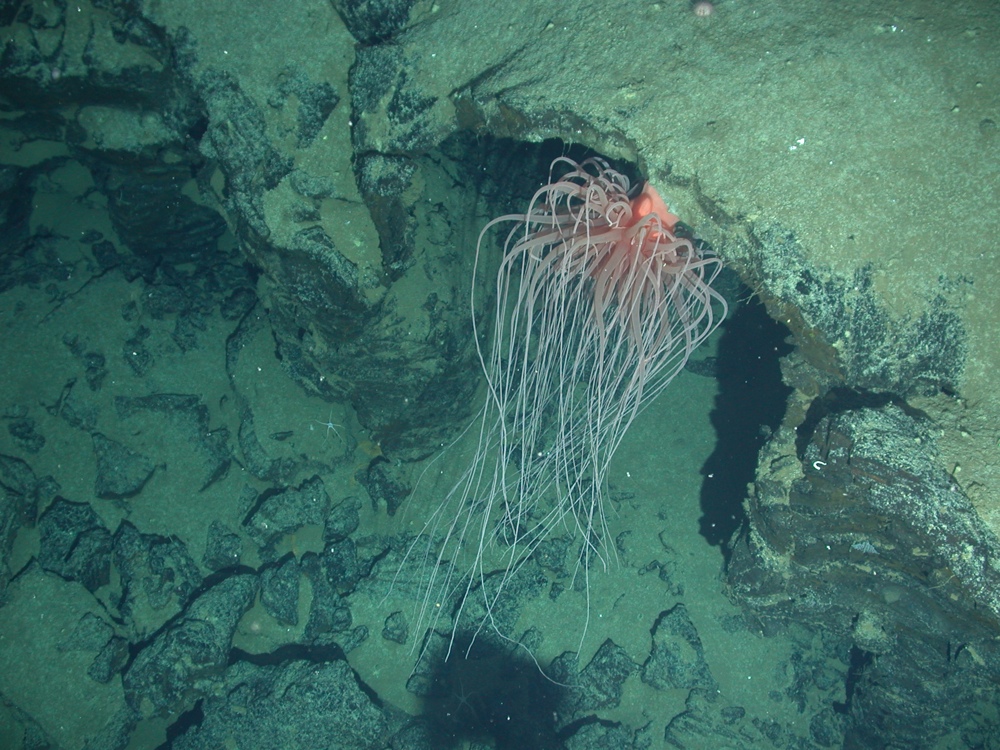Mistaken Identity: 'Sea Anemone' Is Actually New Type of Animal

Lurking in the deep sea is a marine creature thought to be one of the world's largest sea anemones. But the animal, which has tentacles measuring more than 6 feet (2 meters) long, isn't an anemone but rather the first known organism in a new order of animals, according to new research.
In the four-year study, researchers created a "tree of life" for sea anemones, which are sometimes called "flowers of the sea" but are actually stationary meat-eating animals. In doing so, they examined the DNA of Boloceroides daphneae — discovered in 2006 in the deep Pacific Ocean — and found the creature stood out as not fitting on the sea anemone tree of life at all.
Researchers have now renamed the species Relicanthus daphneae, placing it into a new order (the equivalent of Carnivoria for mammals, Crocodilia for reptiles or Actiniaria for sea anemones) within the subclass Hexacorallia, which also includes anemones, black corals and stony corals.
"The discovery of this new order of Cnidaria — a phylum that includes jellyfish, corals, sea anemones and their relatives — is the equivalent to finding the first member of a group like primates or rodents," Estefanía Rodríguez, an assistant curator in the American Museum of Natural History, said in a statement. "This amazing finding tells us that we have so much more to learn and discover in the ocean," added Rodriguez, who led the research. [See Images of the New Creature & Wacky Sea Anemone]
Not an anemone
So why does the oddball look like a sea anemone?
Its similarity to anemones is an example of convergent evolution, which means that two different branches of the tree of life form features that look the same, the researchers said.
Get the world’s most fascinating discoveries delivered straight to your inbox.
"Both groups of animals lack the same character[istic]s, but our research shows that while the anemones lost those character[istic]s over millions of years of evolution, R. daphneae never had them," Rodriguez said in a statement.
The group hopes other members of the same order will be found soon, which will help provide more information on how the tree of life is structured.
From characteristics to DNA
In addition to giving the boot to Boloceroides daphneae, the new study sheds light on sea anemones, a group of animals that are difficult to classify because they have few distinctive structures.
"Anemones are very simple animals," Rodríguez said. "Because of this, they are grouped together by their lack of characteristics — for example, the absence of a skeleton or the lack of colony-building, like you see in corals. So it wasn't a huge surprise when we began to look at their molecular data and found that the traditional classifications of anemones were wrong."
The four-year study aimed to classify the known species of anemones based on their evolutionary relationships with one another. DNA and structural comparisons of more than 112 species worldwide revealed there are only two suborders of anemones (not four, as previously thought).
The findings were published online May 7 in the journal PLOS ONE.
Follow Elizabeth Howell @howellspace. Follow Live Science @livescience, Facebook & Google+. Original article on Live Science.

Elizabeth Howell was staff reporter at Space.com between 2022 and 2024 and a regular contributor to Live Science and Space.com between 2012 and 2022. Elizabeth's reporting includes multiple exclusives with the White House, speaking several times with the International Space Station, witnessing five human spaceflight launches on two continents, flying parabolic, working inside a spacesuit, and participating in a simulated Mars mission. Her latest book, "Why Am I Taller?" (ECW Press, 2022) is co-written with astronaut Dave Williams.


